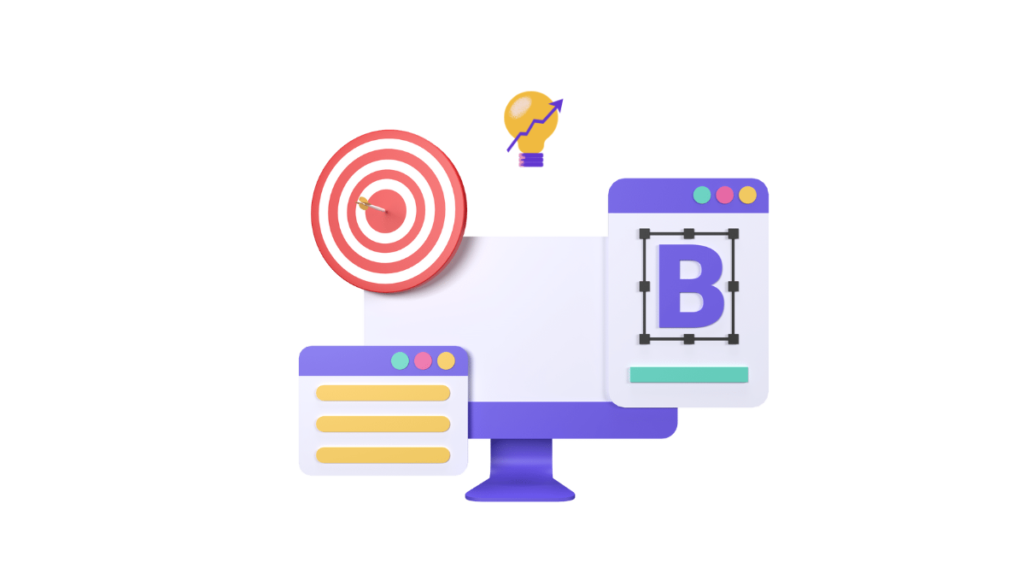In the vast arena of digital marketing, the idea of conversion rate optimisation (CRO) plays a pivotal role. This concept revolves around the practice of increasing the percentage of website visitors who complete a desired action – be it filling out a form, becoming customers, or otherwise. The process involves understanding how users navigate your site, what choices they make, and what’s stopping them from completing your goals.
CRO is a meticulous process that includes aspects such as studying user behaviour on your website, conducting comprehensive A/B testing, optimising webpage elements and ensuring a seamless user journey. Each operation is methodically framed to fuel your website’s conversion power and boost your business significantly. The success of CRO is not an overnight achievement but a result of continuous efforts and strategic decision-making based on real data and user behaviour analytics.
The Power of CRO in Digital Marketing
In an era where digital presence matters profoundly, securing a robust place in the ‘virtual’ world has become the need of the hour for businesses around the globe. Amidst all the facets of digital marketing, Conversion Rate Optimisation (CRO) stands as the epitome of digital efficacy. It marks a significant area that all marketers should be investing in and understanding deeply, as it possesses the impressive power to transform an ordinary online platform into an exceptional one.
Conversion Rate Optimisation works on the fundamental premise of enhancing the percentage of visitors to a website that actually converts into customers. It revolves around a combination of several strategies, psychology, and user experience to improve website performance and, ultimately, business revenue. Besides being the most cost-effective method to increase conversions, CRO allows marketers to understand their audience better and create a more persuasive, user-friendly experience that results in amplified customer satisfaction and brand loyalty. Incorporating CRO not only amplifies the conversion of visitors into leads but also nurtures a better understanding of online traffic, thereby creating a roadmap for a definitive path to progressive digital success.
The Mechanism Behind Conversion Rate Optimisation
As we delve deeper into the world of digital marketing, it is apparent that conversion rate optimisation (CRO) takes centre stage. Unveiling the mechanism that powers CRO is an essential step to comprehend how this strategy can yield higher conversion rates, better user experience, and ultimately, skyrocketing revenue for your business.
The process of CRO begins with analysing user behaviour on your website. This exploration involves investigating quantitative data from web analytics and qualitative data from user feedback. This data provides rich insights about your users, their path on your site, and potential stumbling blocks that prevent them from converting. Subsequently, these insights orchestrate the formulation of a data-driven hypothesis that aligns with your business objectives and intended user outcomes. Following this, experimentation becomes pivotal; deploying methods like A/B testing to validate the hypothesis regarding proposed site changes. The conclusive data derived from these tests feeds into further refinements of the website, continually enhancing features to provide a seamless user journey which ultimately leads to an elevated conversion rate.
Key Components of CRO

Conversion Rate Optimisation (CRO) is a multifaceted process that requires several crucial elements synergistically functioning to improve a website’s performance. A profound understanding and implementation of these fundamental components are vital in maximising the effectiveness of your overall CRO strategy. The core constituents include understanding user behaviour, designing an engaging UX/UI, implementing a robust A/B testing process, deploying persuasive and relevant content, and leveraging accurate analytics.
The first stepping stone in CRO is the comprehension of user behaviour. A deep, data-driven understanding of what motivates website visitors to convert is integral to crafting an effective optimisation strategy. Concurrently, this information assists in creating an engaging user experience and user interface (UX/UI) that encapsulates aesthetics, simplicity, and intuitive navigation. Once the platform’s user-friendliness is ensured, rigorous A/B testing comes into play. This systematic approach involves comparing two versions of a webpage or other user experience to determine which performs better. Relevant and enticing content stands at the heart of any CRO technique because it carries the potential to draw in users and spur conversions. Lastly, the role of analytics cannot be overstressed as it presents clear, actionable insight into a website’s performance and the efficiency of the deployed CRO strategies. Leveraging these key components can transform an average website into a high-converting powerhouse.
Leveraging User Behaviour for CRO
Understanding the distinctive behaviours of web users is an indispensable factor when it comes to conversion rate optimisation (CRO). By evaluating how users navigate through your website, you can gather informative insights into what appeals to them and elicits a conversion. Observing and interpreting user behaviour grants businesses the ability to refine their marketing strategies, and provide a more personalised user experience, ultimately leading to significant improvement in conversion rates.
The first step in leveraging user behaviour for CRO is data collection. Tools like heatmaps and session recordings provide key metrics such as click patterns, scrolling behaviour, and dwell time, which pave the way to understanding a user’s journey on the site. Following data collection, a thorough data analysis is necessary to identify potential problem areas and opportunities for enhancement. For example, knowing the most and least clicked areas on your webpage can guide redesign efforts, aiming to make the user pathway to conversion as straightforward and enticing as possible. By doing so, businesses will not only keep their users engaged and satisfied but also facilitate higher conversion rates, thereby maximising business benefits.
The Role of User Experience in Conversion Optimisation

User experience (UX) is a pivotal facet of conversion rate optimisation (CRO), influencing a visitor’s journey from the moment they land on a page till they reach the desired goal, be it a sale, a sign-up, or any other intended action. This customer-centric approach acts as a crucial determinant of a website’s conversion rate. A website with excellent UX can stave off customer frustrations, prevent site abandonment, and ultimately, foster higher conversion rates.
Notwithstanding, the profound role of UX in CRO revolves around several elements. These include an intuitive interface design, speedy load times, smooth navigation, and a responsive design that adapts to various devices seamlessly. It involves understanding the user’s needs and providing a clear, simple path to conversion by minimising distractions and bottlenecks. Creating an engaging and satisfying user experience is not merely about aesthetics or visual appeal; it is about simplifying user interactions with the website, reducing friction, and making the conversion process as effortless as possible. Consequently, leveraging UX for CRO necessitates usability testing, heat mapping, and other analytic approaches to understand user behaviour and make data-driven design decisions.
Conversion Rate Optimisation and SEO: The Connection
The fusion of Conversion Rate Optimisation (CRO) and Search Engine Optimisation (SEO) can deliver remarkable results for any website. Their interplay holds profound implications for digital marketers, where a thorough comprehension can pave the way to unprecedented levels of success. SEO functions proverbially as the map, guiding potential customers to a website, while CRO acts as the inviting host, ensuring visitors have the best possible experience, persuading them to return or proceed with a conversion.
The dynamic between SEO and CRO is such that, SEO typically focuses on improving organic traffic by optimising the visibility of a website on search engines, using keyword enrichment, meta-tag improvements and creating quality backlinks. CRO, on the other hand, is aimed at enhancing the user experience once they land on the website. This includes creating compelling content, enhancing web design, streamlining navigability, and optimising calls to action. Thus, while SEO drives traffic to a website, CRO works to capitalise on that traffic by maximising the chances of visitor conversion. An integrated approach to these aspects provides a more wholesome and efficient strategy for businesses seeking to boost their online presence and profitability.
Conducting A/B Testing for Conversion Rate Enhancement
A/B testing is a pivotal technique in enhancing conversion rates. Essentially, it is an experiment enabling the comparison between two versions of an element or webpage to ascertain which performs better with users. The ‘A’ represents the control version, the original variant, while ‘B’ is the test version, carrying the proposed changes. The performances of these versions are evaluated based on metrics like click-through rates, time spent on the page, or ultimately, conversion rates.
A/B testing begins with identifying a key aspect of your website that may be directly affecting user experience or conversion rates. This could be anything from the colour and size of your call-to-action (CTA) button, header images, and product descriptions, to the layout of the webpage. After identifying the element, two versions, ‘A’ and ‘B’ are created. ‘A’ remains unchanged while ‘B’ incorporates the proposed modifications. Visitors are then randomly shown either version and their interaction data is recorded. Through statistical analysis of this data, a determination is made as to which version brought about more conversions. By continually testing and implementing these data-driven changes, businesses can significantly enhance their conversion rates.
Landing Page Optimisation: A Crucial Element in CRO

In the realm of Conversion Rate Optimisation (CRO), the importance of landing page optimisation can’t be overstated. As the first interaction point between your website and potential customers, the landing page plays a pivotal role in creating a positive user experience. A well-designed and optimised landing page forms an effective lead capture tool that can greatly contribute to conversion and engagement figures, thus strengthening your online business presence.
Commencing at the forefront, the optimisation process of a landing page starts with careful analysis and understanding of your target audience. Once you have these consumer insights, you incorporate them into creating intuitive, visually appealing pages, that are not only user-friendly but as well cater to the specific needs and preferences of your audience. A good understanding of your value proposition and a clear Call to Action (CTAs) are vital in steering visitors towards conversion. Furthermore, splitting testing different versions of landing pages can offer valuable insights about what resonates best with your audience, thereby informing continuous improvement. Thus, a deep-rooted focus on landing page optimisation enables you to enhance customer journeys leading to amplified conversions.
The Impact of Content on Conversion Rate Optimisation
In the realm of digital marketing, the power of content cannot be overstated. High-quality, engaging content plays a pivotal role in conversion rate optimisation (CRO), establishing a fundamental link between customer engagement and lead conversion. An understanding of this impact not only enriches the comprehension of CRO but also paves the way for effective implementation of the optimisation strategies.
Initiating the journey, it’s important to acknowledge that quality content draws the attention of potential customers, engaging them and inviting exploration of a site or page. Through a strategic fusion of information, persuasion, and attraction, quality content leads the user towards an action – a purchase, a sign-up, an inquiry, or other forms of positive engagement. Furthermore, targeted content enables effective communication with the desired audience, igniting interest, and encouraging conversion. Such an approach is made more potent with the inclusion of calls-to-action (CTAs), guiding the user forth on the conversion path. Thus, it is clear that content – be it text, video, images, or other formats – indeed has a profound impact on Conversion Rate Optimisation, augmenting the power and efficacy of other integrated digital marketing strategies.
Utilising Analytics to Boost Conversion Rate

Web analytics provide in-depth data about the behaviour of visitors on a website, providing invaluable input for strategising improvements in conversion rates. Across the customer journey, these analytics tools map out key indicators like user engagement, bounce rates, returning visitors, and time spent on individual pages. By interpreting this robust data, businesses can pinpoint the roadblocks impeding conversion and thereby plan their tactics for optimising the conversion rate.
Indeed, analytics enable businesses to discern the buying patterns, preferences, and behaviour of their customers. This understanding subsequently guides the enhancement of on-site elements, such as form design, page loading speed, navigation structure, and call-to-action buttons, all of which contribute to improving conversions. These analytics-based alterations align with the visitors’ expectations, in turn, making the journey from landing on the website to completing the desired action more seamless. It’s a process that calls for ongoing monitoring and tweaks, but with a systematic approach, it indirectly contributes to the improvement of conversion rates.
Measuring Success in Conversion Rate Optimisation
There is a fulcrum upon which the entire process of Conversion Rate Optimisation (CRO) pivots; the measurement of its success. Versatile are the methods that help determine how well the optimisation strategies are working. To understand the effectiveness of implemented changes the critical tool at your disposal is website analytics. This earned data can offer insights into the performance of each modification and aid in identifying areas that need further work.
Essentially, success in CRO means increasing the percentage of website visitors who complete a desired action. This could involve purchasing a product, signing up for a service, filling out a form, or even just clicking on a link. To narrate the process, it begins with understanding the user journey and creating a hypothesis around potential improvements. Post the application of these changes, tracking indicators such as bounce rate, session duration and individual page performance will accurately depict the success or lack thereof. This cyclic process is the lifeblood of effective CRO. By employing a creative approach and methodical assessment, businesses can turn their websites into powerful, result-fueled entities.
The Future of Conversion Rate Optimisation.

Emerging trends and technologies are rapidly transforming the landscape of conversion rate optimisation (CRO). In an increasingly digital world, marketers must stay ahead of the curve to leverage the enhanced capabilities such digitisation offers for improving conversion rates. As we look towards the future, advancements in fields such as artificial intelligence, machine learning, and data analytics promise to augment current CRO methodologies, enabling businesses to meticulously tailor their customer journey, and convert a higher percentage of website visitors into loyal customers.
Beginning with Artificial Intelligence (AI), this forefront technology will play a significant role in the future of CRO. AI can extract meaningful insights from vast amounts of data, helping marketers discern complex consumer behaviour patterns and refine their digital strategies accordingly. Moreover, machine learning algorithms can identify which website aspects are most influential within the conversion process, thereby optimising these facets for greater conversion success. On another hand, enhanced data analytics capabilities stand to revolutionise the CRO landscape. The deployment of advanced analytic tools for actionable insights enables real-time modifications, ensuring the effectiveness of CRO strategies. From tracking consumer interactions to monitoring buyer’s journeys, these technological giants point towards a future where converting browsers into buyers becomes an optimally automated process.
- AI and Machine Learning: Artificial Intelligence (AI) and machine learning will be instrumental in the future of CRO. These technologies can analyse large volumes of data to reveal complex consumer behaviour patterns, allowing marketers to fine-tune their digital strategies accordingly. Furthermore, machine learning algorithms can identify which aspects of a website are most influential in the conversion process, enabling these elements to be optimised for greater success.
- Data Analytics: Advanced data analytics capabilities will also play a crucial role in transforming the CRO landscape. With these tools, businesses can gain actionable insights that allow for real-time modifications to improve the effectiveness of their CRO strategies.
- Customer Journey Mapping: The use of AI and advanced analytics tools enables businesses to meticulously tailor customer journeys. This means they can guide potential customers through each stage of the buying process more effectively, thereby increasing conversion rates.
- Real-Time Modifications: Future advancements promise an era where real-time modifications become standard practice. This ensures that any changes made are immediately effective and contribute directly towards improving conversion rates.
- Automation: As technology continues its rapid advancement, we foresee a future where converting browsers into buyers becomes an optimally automated process. From tracking consumer interactions to monitoring buyer’s journeys – automation promises efficiency as well as improved results in terms of conversions.
In conclusion, while there is no one-size-fits-all approach when it comes to Conversion Rate Optimisation (CRO), emerging trends such as artificial intelligence (AI), machine learning and advanced data analytics suggest exciting possibilities for enhancing current methodologies.


